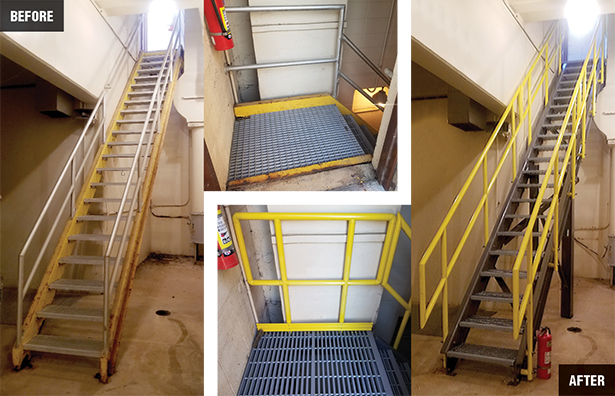Case Study: Water Treatment Operator Upgrades Stairway

Hydrogen sulfide is one of the most prevalent gases produced through the processing at water treatment plants. The colorless gas is a byproduct of decaying organic matter and can be easily detected through the olfactory scent of rotten eggs. Prolonged human exposure to this gas can be acutely toxic. In addition to its toxicity, the gas can be corrosive once it is introduced to a moisture-rich environment, which is common in water processing.
To combat the prevalence of this gas, water treatment operators reduce the gas through oxidation processes.
A water treatment operator in Wisconsin recently replaced a metallic stairway with a fabricated fiberglass version made entirely with Strongwell’s products. This specific stairway was experiencing corrosion issues resulting from higher concentrations of hydrogen sulfide exposure and its effects on the metal.
| TECHNICAL DATA |
|---|
| Product: Water Treatment Plant Stair Structure |
| Process: Pultrusion, Fabrication |
Materials & Sizes:
|
| For & User: Oconomowoc Wastewater Utility |
The new fiberglass stairway has a 15' rise and a 19' run. Outfitting the structure are EXTREN® 525 structural shapes, 21 stair treads fabricated from 1-½" I-6000 DURAGRID® pultruded grating, and round SAFRAIL™ handrail.
Upon installation, the end-user commented that they were drawn towards Strongwell’s FRP products because of the facility’s two previous positive experiences with Strongwell materials. Those projects received overwhelmingly positive reviews of the durability and performance of those retrofits and rebuilds which replaced metal components.